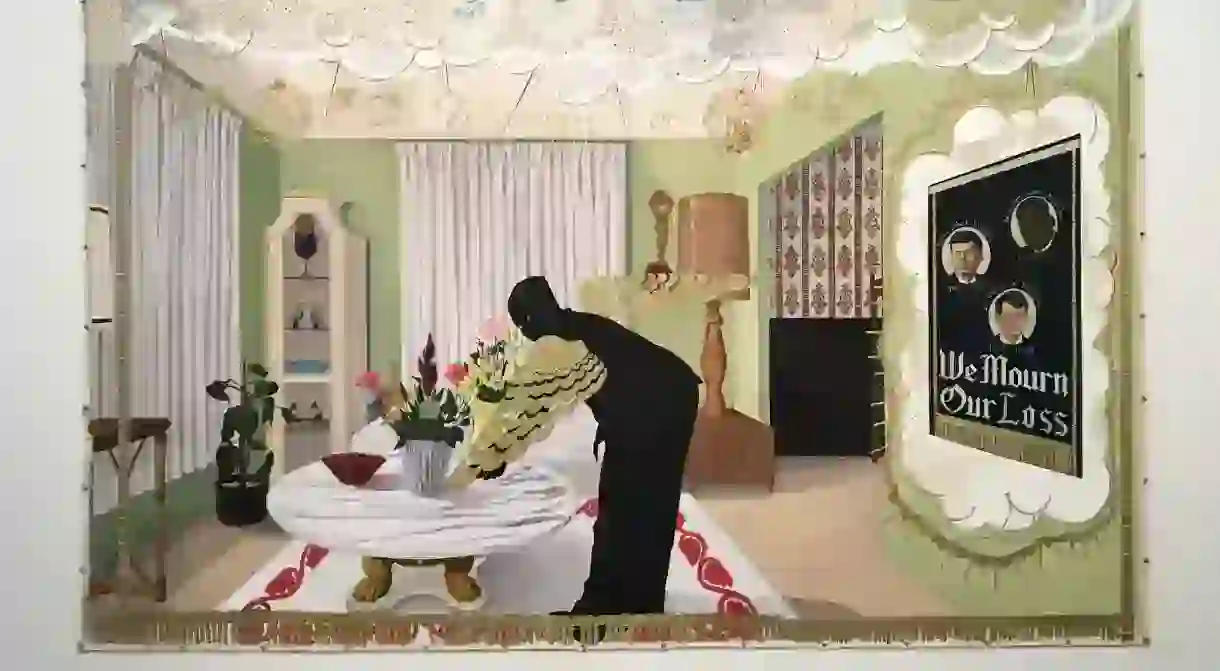P. Diddy Spent $21 Million on a Painting by This Iconic Chicago Artist

An anonymous bidder purchased “Past Times,” a large-scale painting by Chicago-based artist Kerry James Marshall, for $21.1 million at Sotheby’s Contemporary Art Evening Sale in May. Its purchase was noteworthy for two reasons. One, the buyer turned out to be none other than music legend Sean “P. Diddy” Combs. Two, the price set a record for the highest amount paid for a work by a living African-American artist.
Marshall currently lives in Chicago, but he was born in Birmingham, Alabama in 1955 during the infamous bus boycotts in Montgomery. In 1963, Marshall and his family moved to Los Angeles’ South Central Watts neighborhood, close to Black Panther headquarters.

After graduating from the Otis Art Institute in the 1970s, Marshall focused his paintings on familiar, everyday scenes of African-American life: from beauty parlors, barber shops, gardens, and cafés. Marshall presents the full, human, and nuanced black experience in his work, giving a voice to a community that has been underrepresented in the canon.
In recent years, Marshall’s 35-year retrospective, Mastry, appeared at the Museum of Contemporary Art in Chicago, the Metropolitan Museum of Art in New York, and the Museum of Contemporary Art in Los Angeles.
Marshall won the MacArthur Fellowship in 1997, the same year “Past Times” was completed. The City of Chicago also awarded him the Fifth Star Award, an honor given to legendary Chicago creatives.

Marshall isn’t the only African-American artist revamping the art market scene these days. Many artists, like David Hammons and Njideka Akunyili Crosby, are challenging how their culture is portrayed in art and media. Culture Type likens today’s creative scene to that of the 1960s and 1970s when civil rights activists pushed for more accurate, consistent, and prominent representation of black figures in art around the country – and the world.
“What you’re trying to create is a certain kind of indispensable presence,” Marshall told NPR.













